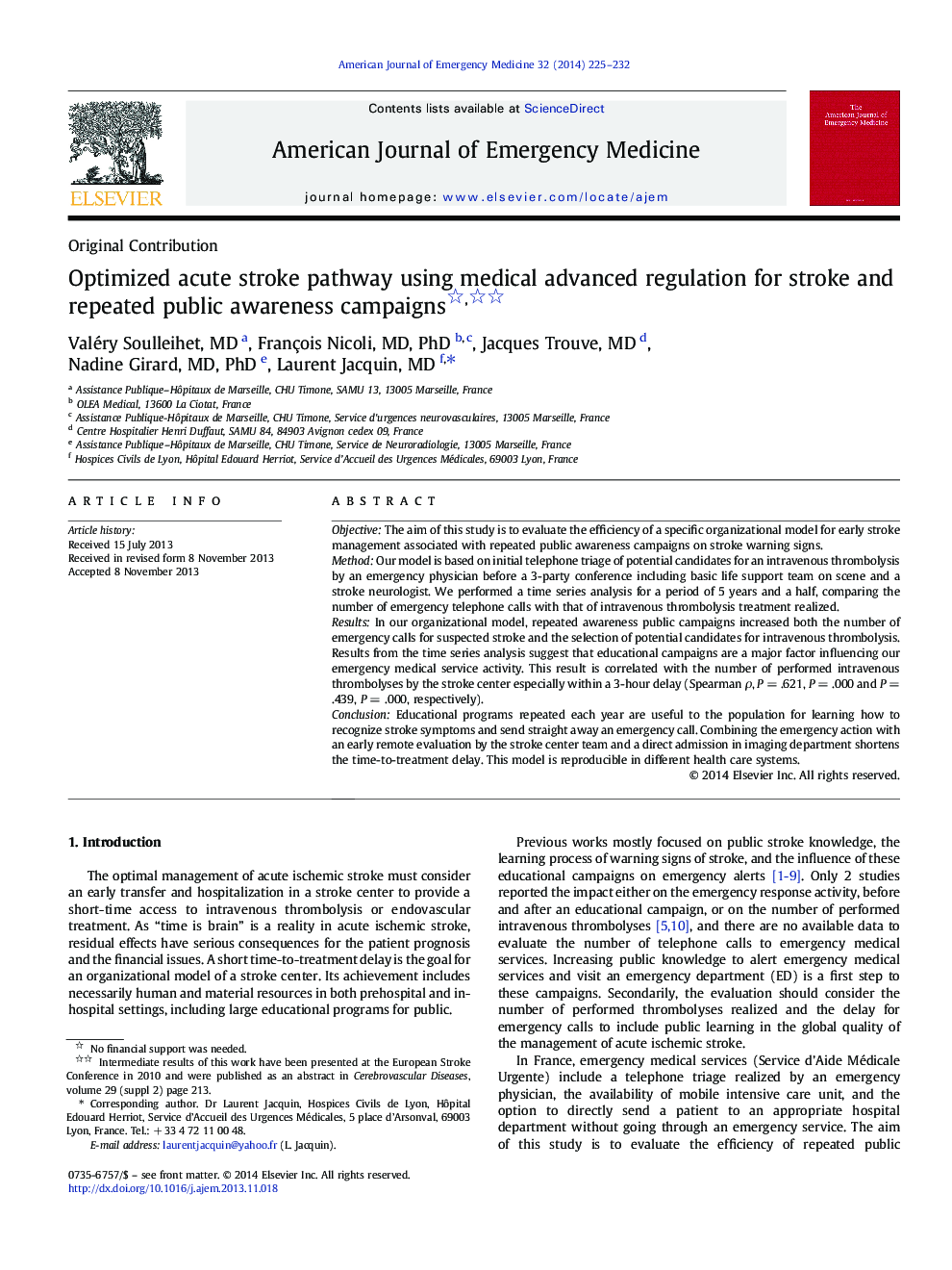| Article ID | Journal | Published Year | Pages | File Type |
|---|---|---|---|---|
| 3223970 | The American Journal of Emergency Medicine | 2014 | 8 Pages |
ObjectiveThe aim of this study is to evaluate the efficiency of a specific organizational model for early stroke management associated with repeated public awareness campaigns on stroke warning signs.MethodOur model is based on initial telephone triage of potential candidates for an intravenous thrombolysis by an emergency physician before a 3-party conference including basic life support team on scene and a stroke neurologist. We performed a time series analysis for a period of 5 years and a half, comparing the number of emergency telephone calls with that of intravenous thrombolysis treatment realized.ResultsIn our organizational model, repeated awareness public campaigns increased both the number of emergency calls for suspected stroke and the selection of potential candidates for intravenous thrombolysis. Results from the time series analysis suggest that educational campaigns are a major factor influencing our emergency medical service activity. This result is correlated with the number of performed intravenous thrombolyses by the stroke center especially within a 3-hour delay (Spearman ρ, P = .621, P = .000 and P = .439, P = .000, respectively).ConclusionEducational programs repeated each year are useful to the population for learning how to recognize stroke symptoms and send straight away an emergency call. Combining the emergency action with an early remote evaluation by the stroke center team and a direct admission in imaging department shortens the time-to-treatment delay. This model is reproducible in different health care systems.
